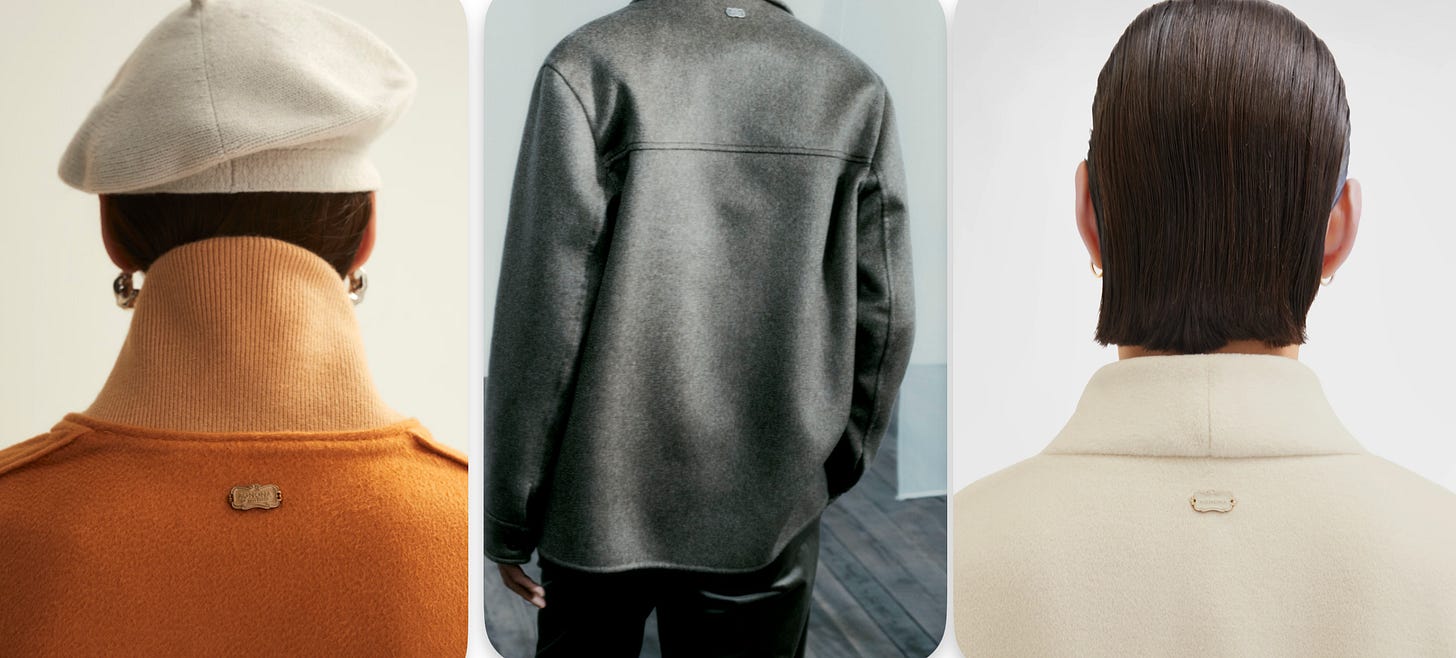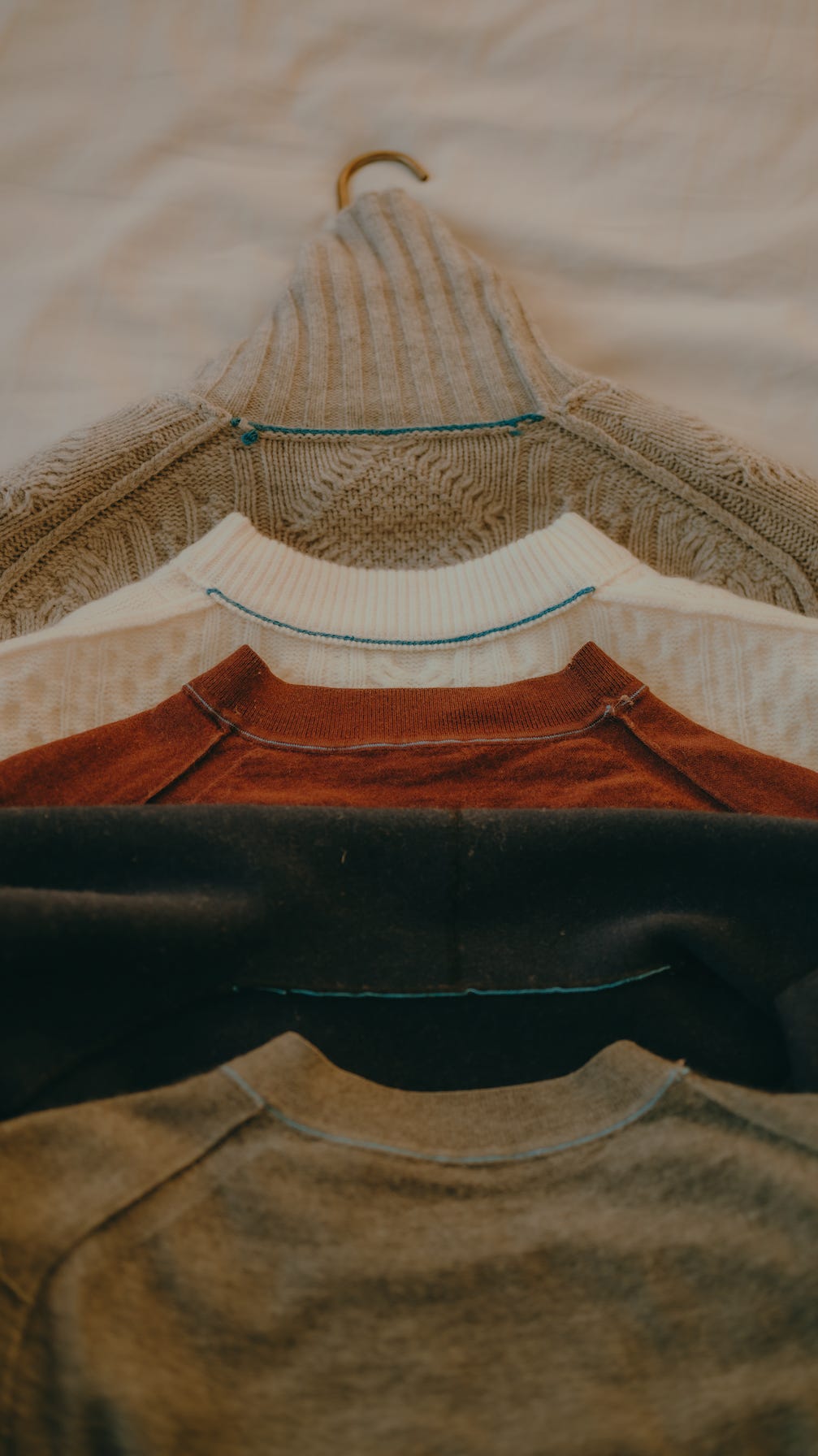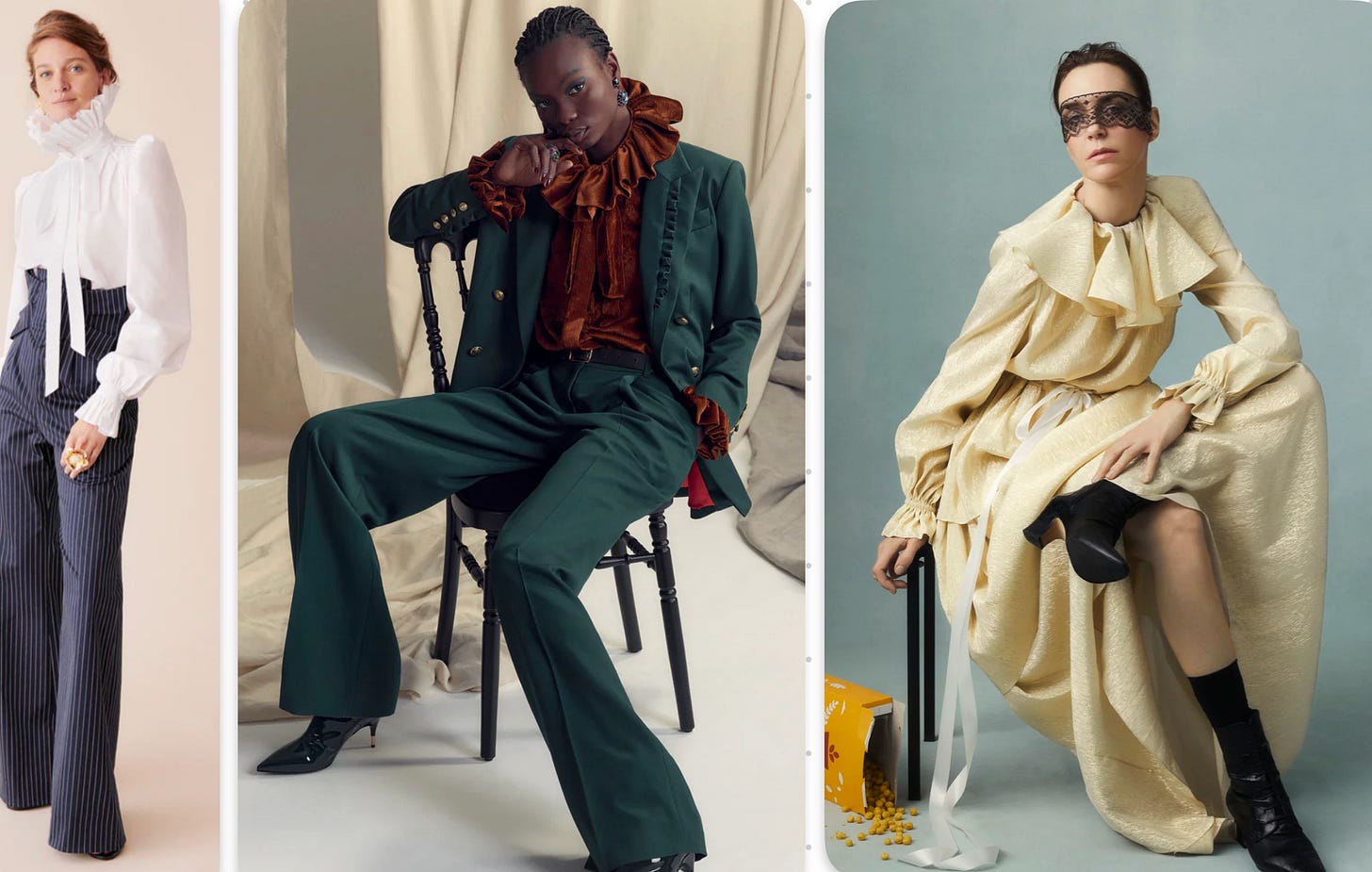11 Minimalist Luxe Brand Elements to Elevate Your Brand Identity
In today's trend of quiet luxury and minimalism, brand identity has evolved beyond prominent logo arrays, showcasing brand characteristics through meticulously designed details, textures, pattern details, and distinctive colors. This summary compiles my observations of unique element designs specific to each brand:
Leather brands: Can add leather elements to clothing, accessories, buttons, and pockets; can also be known for specialty leathers, such as eel skin or Intrecciato woven leather
Logo element applications: Beyond conventional use on zippers and belts, logos can inspire similarly shaped bags; particularly elegant and refined logos can be made into solid pins placed on the back. Logo shapes can also be developed into graphic visual designs and patterns applied to silk scarves, pajamas, and dresses
Distinctive clothing designs: Turn ribbing, sequins, bobble stitches and other textures and fabrics into brand signatures, with even brand colors being fixed and consistent in style
leather
Hermès's orange leather is used on coat cape fasteners, and extra leather elements are added to ordinary cashmere gloves
Bottega Veneta's woven leather pattern is not only used on bags but also on BV shoes. Even BV's annual gathering photo wall features the woven element
logo
Akris's trapezoid logo is used on belts, zippers, fasteners, and bag shapes. Even the scarves on the official website are folded into shapes similar to the Akris trapezoid. Akris's logo inspiration comes from architecture, as mentioned in Akris. This is more commonly used, such as Hermes's H letter belt and Gucci's double G logo
Agnona has also started adopting this approach, making belt shapes from their logo, and adding a pure metal brand logo to the back of coats and jackets
Toteme , based on the meaning of totem, specifically designed a brand logo and applied linear versions of it to scarves, wraps, and silk sets. This approach is quite innovative, similar to Loewe
The brands above all base their detail designs on their logos, while BC has turned elements like sequins and beading into their signature design by repeatedly using them in womenswear over the years, outlasting competitors. Unlike the direct applications above, BC has other representative designs beyond these elements in womenswear, creating a consistent brand style across many garments, as seen in Brunello Cucinelli BC's purple-gray beads and sequin elements are used on shoes, zippers, and collar edges in womenswear. Besides these beads, BC sometimes also uses its pattern logo on zippers
Dreyden's cashmere sweaters all have blue lines in Dreyden brand logo color on the inner collar
garment
Brands that create distinctive design signatures and recognition in their garments generally have a consistent style, pattern, fabric, and design that's recognizable at a glance. The most famous is Burberry's trench coat and their self-created Nova Check tartan, already introduced in Explained in Detail: Scottish Tartan Plaids & Classic Tweed Fabrics || 9 Iconic British Brands . When a brand can fully develop, refine, and create a professional, stylish approach to just one category of major items like coats, trench coats, suits, or large cashmere sweaters, the brand's strength becomes very stable. Sentaler 's coats all have this ribbed sleeve detail, all made of alpaca wool, with only two fabric composition ratios across the line
Lauren Manoogian consistently uses pressed sand-colored and off-white alpaca wool fabrics. The colors are fixed, the fabric techniques are fixed, and the style is consistent
Sa Su Phi 's double brioche stitch ribbing connection, known in English as English ribbed. Just as Brunello Cucinelli can make sequins and beading their brand signature, Sa Su Phi can completely make this brioche stitch or English Rib the brand signature for their cashmere sweaters Sa Su Phi cashmere sweaters share the common element of using double bobble stitch ribbing design at these seams, either with English rib seams connecting the front, back, sleeves, and torso
Or directly creating exaggerated brioche stitch ribbing seams at the shoulders
Even usingbrioche stitch ribbing as a decorative element
My own two Sa Su Phi cashmere sweaters are like this - the white one (round neck double cuff cashmere sweater) has brioche stitch ribbing at the shoulder blades on both front and back, while the black one has very thick double brioche stitch ribbing at the shoulders. The white one (belted turtleneck cashmere sweater dress) has gotten dirty, and the black one has started pilling, so I plan to wash and put them away in half a month, as Beijing will start blossoming around mid-March
Prune Goldschmidt's ruffled, flounced necklines and cuffs
Epilogue
Le Kasha is also very special, but not because of the visual design elements mentioned above. Rather, it's unique for its one-size-fits-all organic cashmere. All garments come in a single size, suitable for both men and women. Their cashmere is all organic - I've researched dozens of cashmere brands, and only Le Kasha uses organic cashmere exclusively, while others like N.Peal, Lisa Yang, and Arch4 only use it partially. Because organic cashmere costs more, Le Kasha's prices are higher compared to cashmere brands of similar quality
Speaking of brands that can be recognized by their style and cut alone, without obvious visual symbols or design details, I currently think only Brunello Cucinelli The Row (The Row Menswear ),Khaite and Miu Miu qualify. They don't rely on visual symbols in individual garments, but rather maintain a consistent style throughout each season's lookbook
The 11 brands mentioned above are what I've observed to focus on creating distinctive visual brand designs. I'll add more brands with unique designs as I discover them
pamperherself






















